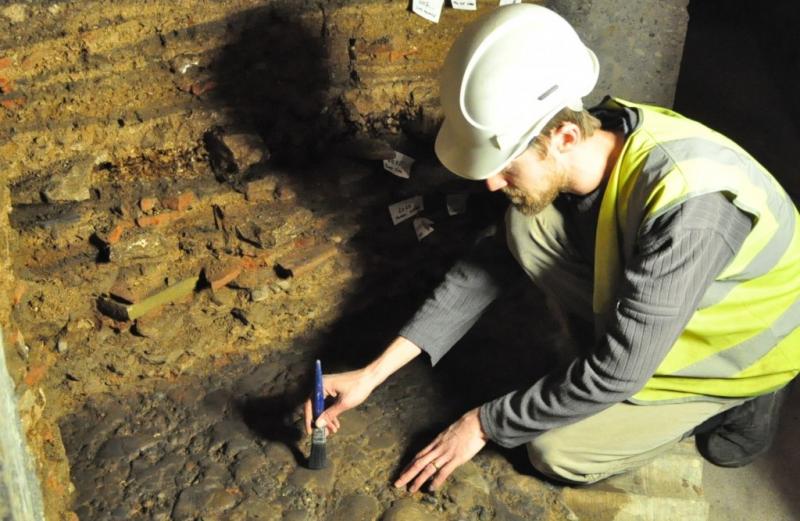picture courtesy of archaeosoup.com
Archaeologists have discovered a section of Roman road beneath York Minster in north England.
York Minster is the largest Gothic cathedral in northern Europe. Archaeologists from York Archaeological Trust unearthed the road during construction work on the new visitor development in the Undercroft that launch this summer.
The city of York was founded by the Romans in 71AD, under the name Eboracum, when the Ninth Legion conquered the Brigantes and constructed a wooden military fortress. The fortress was rebuilt later in stone and previous excavations revealed some of the original walls under York Minster.
The road section is believed to have been a backstreet, part of the Via Quintana, running behind the Roman basilica under which the medieval Minster sits. The backstreet was used for hundreds of years, and was frequently patched and repaired. It fell into disuse at the same time as the basilica itself. The section of road will allow further analysis of the remains found in previous excavations.
The Dean of York, the Very Reverend Vivienne Faull, said: “While it was not as grandly paved as the main streets of Roman York, you can imagine that this backstreet, situated as it was between the basilica and the praetorium [officer’s quarters], was exactly the kind of place where the real business of the [Roman] Empire was done. It probably even witnessed the very first Christians on their way to worship.”
The development of new visitor displays is part of the major York Minster Revealed project. The £10.5 million five-year project supported by the Heritage Lottery Fund scheduled for completion in early summer 2016. It is the largest restoration and conservation project of its kind in the UK. Usually, archaeological excavation can only take place in exceptional circumstances within such an important and multi-layered historic setting. It is only because of proposed works that the dig was permitted and it has given archaeologists a rare opportunity to investigate York Minster’s early history.
The Roman road is one of the many stories about York Minster’s past, which will be revealed in February when the archaeological analysis on all of the recent excavations will be released. Ian Milsted, lead archaeologist from York Archaeological Trust said: “Before this, there had been no archaeological excavations at York Minster for over 40 years, so it’s a huge privilege to be revealing pieces of the past in such an iconic building, all of it contributing to our picture of life in ancient York.’’













